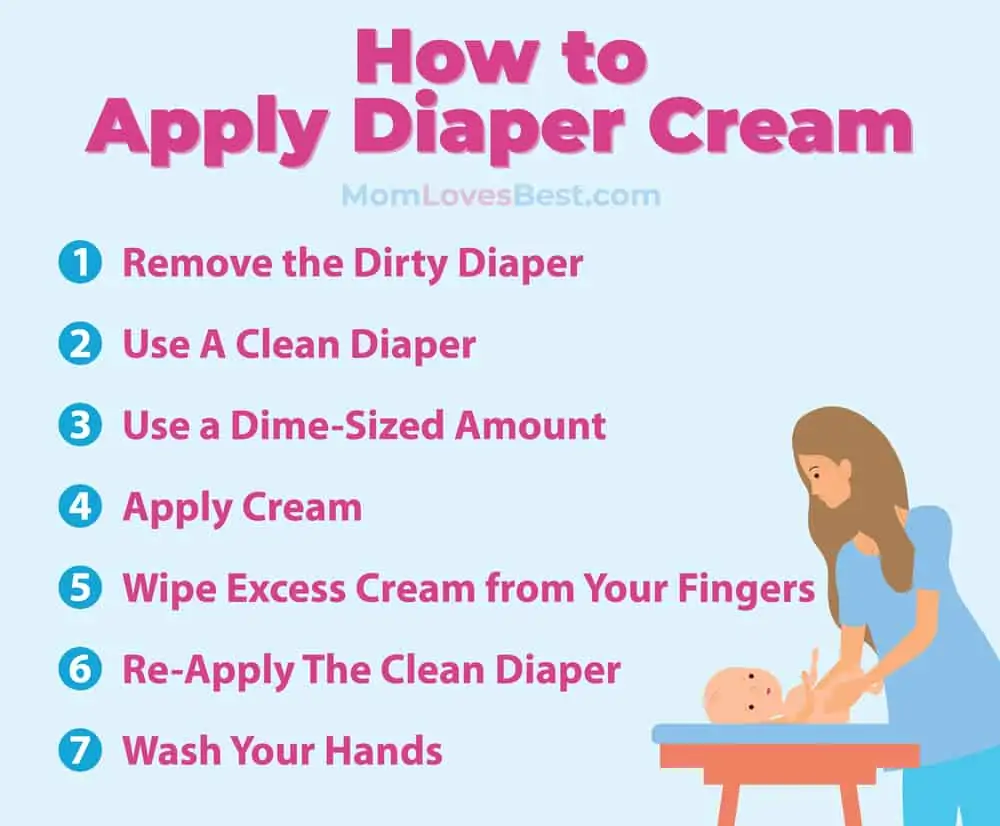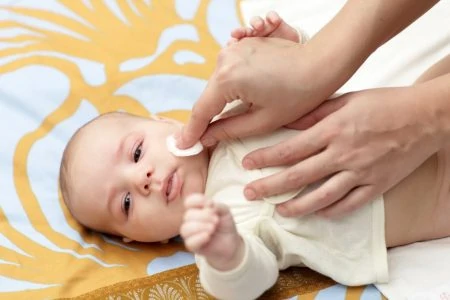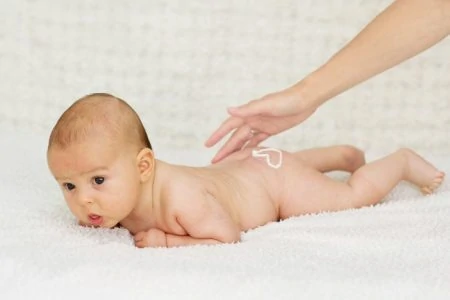Seeing your baby in pain is heartbreaking. Diaper rash is a rite of passage for most little ones, but that doesn’t make dealing with that angry red skin any easier.
Most parents face this battle at least once during the first year. While common, treating it effectively requires knowing exactly what you are dealing with. Is it irritation? A yeast infection? Or perhaps a reaction to a new food?
We’re here to help you decode the details. We’ll cover what causes diaper rash, how to identify the specific type bothering your baby, and the best ways to soothe their skin fast.
Key Takeaways
- Identify the cause: narrow it down to yeast, acidic stool, contact irritation, bacterial infection, or eczema.
- Choose the right treatment: use barrier creams for standard rashes, antifungal meds for yeast, and prescription options for severe infections.
- Prevention is key: change diapers frequently, pat skin dry completely, and allow for plenty of diaper-free “air time.”
- Know when to call the doctor: seek help for blisters, fever, pus, or if the rash spreads beyond the diaper area.
The Different Types of Diaper Rash
To treat the problem, you first have to name it. Identifying the type of rash determines the cure. While rashes can pop up as early as one week old, they strike most often between 9 and 12 months.
Here are the most common culprits:
1. Yeast (Candida)
Diapers create a warm, moist environment where yeast loves to thrive. This specific strain, Candida, usually grows in the deep folds of your baby’s skin (1). It is also common in babies taking antibiotics or breastfeeding moms on medication.
A yeast rash appears bright red and scaly with sharp, raised borders. Unlike standard irritation, it often features “satellite lesions” (small red dots) surrounding the main rash (2).
Standard barrier creams won’t fix this. If you suspect yeast, your pediatrician may prescribe an antifungal like Nystatin or recommend an over-the-counter option like Clotrimazole.
2. Acidic Bowel Movements
When babies start solids or consume acidic foods (like strawberries, tomatoes, or citrus juices), the pH of their stool changes. This acidity can burn the skin upon contact.
This rash looks like a bright red chemical burn. If not treated quickly, it can lead to open sores.
Barrier creams are your best friend here. Apply a thick layer of paste with every change to protect the skin from acidic poop. If the rash persists, try eliminating acidic foods from their diet temporarily.
3. Contact Dermatitis (Irritant)
This is the most common form of diaper rash. It appears flat and blotchy, usually covering the buttocks where the diaper touches the skin. It is caused by friction, wetness left too long, or sensitivity to chemicals in diapers or wipes.
The fix is simple: change diapers frequently and use a barrier cream. If the rash persists despite frequent changes, consider switching diaper brands or laundry detergents to rule out chemical allergies.
4. Bacterial Infection
Sometimes, broken skin from a regular rash gets infected with bacteria like Staph or Strep. This is less common but more serious.
Bacterial rashes often look like Impetigo. Watch for yellow, crusty scabs, oozing blisters, or pus-filled pimples (3).
Do not treat this at home. Contact your doctor immediately, as your baby likely needs a topical or oral antibiotic (4).
5. Eczema (Atopic Dermatitis)
Eczema often shows up as dry, scaly, itchy patches. In the diaper area, it can be triggered by heat, allergens, or irritants.
If your baby has eczema elsewhere on their body, the diaper area is fair game too. Here is how to manage it:
- Switch wipes: Use water-based, fragrance-free baby wipes.
- Soothing baths: Try an oatmeal bath to calm inflammation.
- Moisturize: Use coconut oil or eczema-specific balms.
- Reduce allergens: Switch to hypoallergenic body wash and laundry detergent.
- Consult a pro: If over-the-counter methods fail, ask your doctor about steroid creams.
What Diaper Cream Should I Get?
Walking down the baby aisle reveals dozens of tubes and tubs, which makes choosing the right one confusing. The “best” cream depends entirely on the severity of the rash and what ingredients are needed to heal it.
Here is a breakdown to help you make the right buying decision:
- For mild redness (Prevention & Daily Use): Look for lower concentrations of zinc oxide or petrolatum-based ointments like Honest, Cetaphil, or CocoMe. These provide a breathable barrier that prevents irritation without being too difficult to wipe off.
- For moderate rashes (Protection): You need a stronger barrier. Look for creams with 10% to 20% zinc oxide, such as Baby Butz, Desitin (Blue), or Balmex. Zinc oxide helps reduce inflammation and creates a thicker shield against moisture.
- For severe rashes (Treatment): When skin is raw, you need maximum strength. Look for products containing 40% zinc oxide, like Boudreaux’s Butt Paste (Max Strength) or Burt’s Bees Diaper Ointment. These are thick, sticky pastes that adhere to the skin to allow healing underneath.
Medical Note
How Do I Prevent Diaper Rash?
Once you clear up the rash, you want to ensure it stays away. Preventing diaper rash is largely about moisture control and reducing friction.
Follow these steps to keep your baby’s bottom clear:
- Change frequently: Wetness is the enemy. Check diapers every 1 to 2 hours and change them immediately after a bowel movement.
- Clean gently but thoroughly: Don’t miss the folds. Use fragrance-free wipes or warm water on a soft cloth to clean the area (bath time counts too!).
- Pat dry, don’t rub: Friction aggravates sensitive skin. Gently pat the area dry or let it air dry before applying a fresh diaper.
- Go diaper-free: Give the skin “air time.” Lay your baby on a towel for 10-15 minutes a few times a day to let the skin breathe completely.
- Loosen up: Diapers that are too tight trap heat and moisture. Leave a little breathing room to increase airflow.
- Monitor the diet: If a specific fruit or juice consistently causes a rash, pause that food for a few weeks to let the digestive system mature.
- Skip the fragrance: Scented wipes and lotions can contain allergens. Stick to plain water or hypoallergenic products.
- Hand hygiene: Always wash your hands before and after changes to prevent spreading bacteria or yeast.
A Note About Cloth Diapers
We love cloth diapers for saving money and reducing waste. However, cloth requires a slightly different approach when it comes to rashes.
1. Ammonia Burn
Sometimes a “rash” is actually an ammonia burn. This happens when urine breaks down in the diaper, creating harsh fumes that burn the skin (read more on ammonia here).
This is common with overnight diapers or if the wash routine isn’t fully cleaning the diapers. It looks like a flat, red burn or blister. Unlike disposables, cloth doesn’t wick moisture as aggressively, so the urine sits against the skin longer.
2. Creams and Cloth Compatibility
Standard diaper creams can ruin cloth diapers. Petroleum and zinc often coat synthetic fibers, causing them to repel liquid rather than absorb it. This leads to leaks and stubborn buildup.
If you use cloth, look for “cloth-safe” creams free from petroleum and cod liver oil.
Need to use a heavy-duty rash cream? You still can! simply use a liner. A disposable liner, a piece of microfleece, or an old t-shirt scrap placed between the baby and the diaper will protect the fabric.
If you use natural fibers like cotton or hemp, washout is easier, but using a liner is still smart to prevent staining. Always wash cloth diapers with a solid routine to prevent bacteria buildup.
When Should I Call the Doctor?
Most rashes heal with home care, but some require medical backup. Do not hesitate to call your provider if you are worried.
Contact your pediatrician if you notice these signs:
- Fever: Any fever accompanying a rash suggests an infection.
- Spreading: The rash moves beyond the diaper area to the legs or torso.
- No improvement: The rash persists or worsens despite 3 days of treatment.
- Diarrhea: If the rash is paired with diarrhea lasting more than 48 hours (5).
- Signs of infection: Look for blisters, pus-filled sores, yellow crusting, or bleeding.
FAQs
Taking Rash Action
Every baby deals with diaper rash at some point, so don’t feel guilty. The key is to act fast. Identify the type of rash, keep the area dry, and apply a barrier cream to protect that sensitive skin.
With a little patience and plenty of diaper-free time, your baby’s bottom will be back to normal before you know it.













